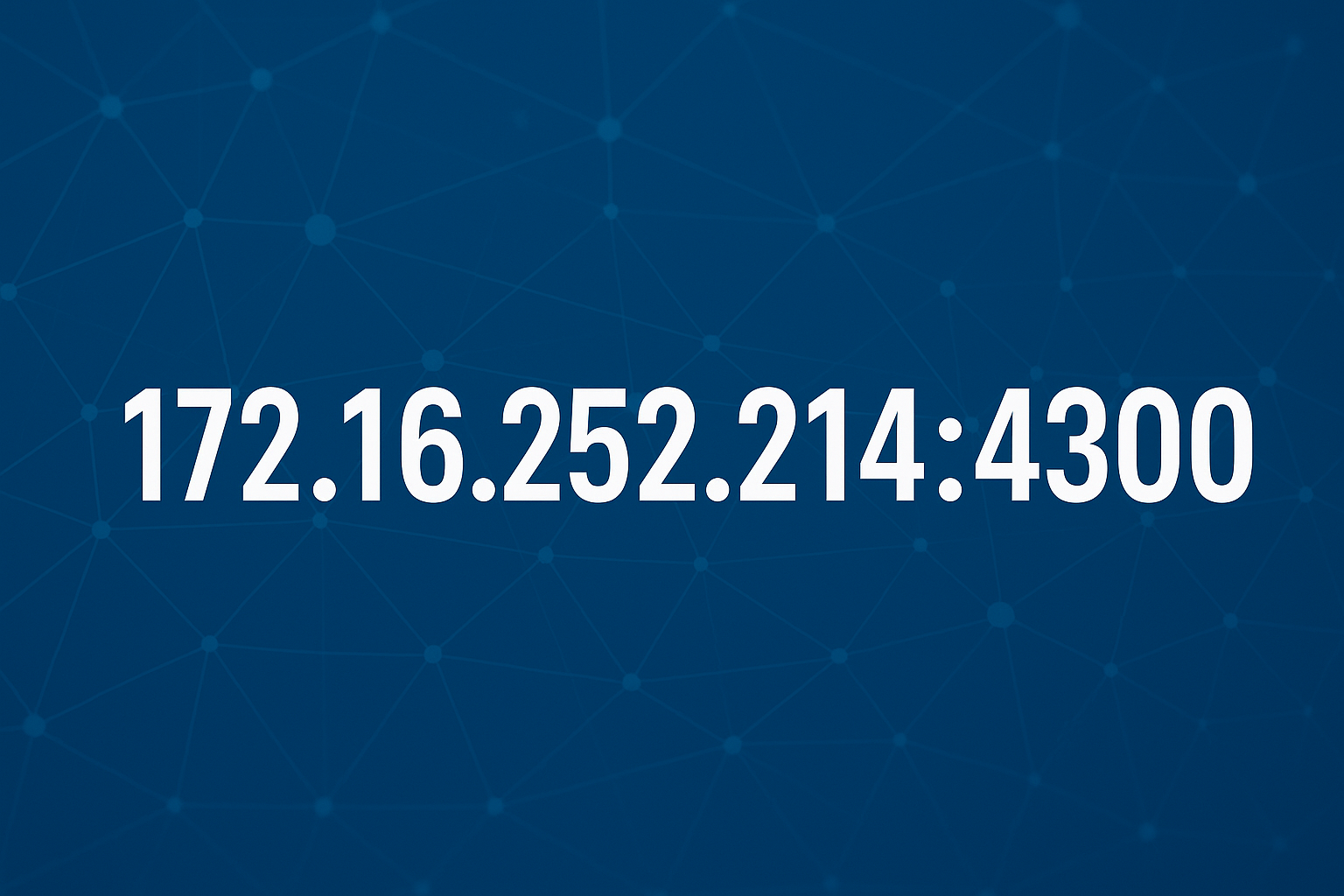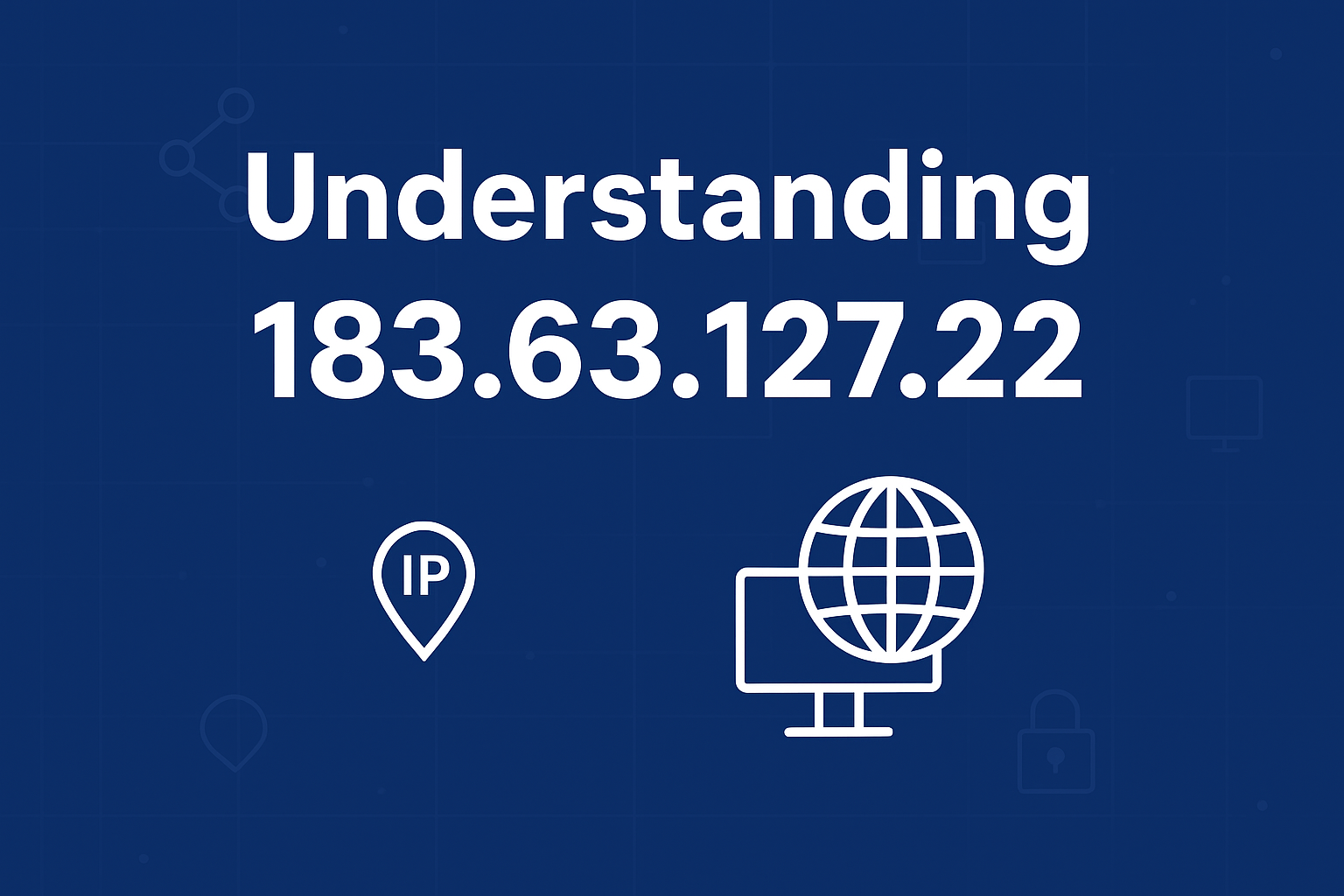Introduction to 172.16.252.214:4300
In the modern era of digital connectivity, every network relies on structured addressing to facilitate seamless communication between devices and applications. One such identifier that often appears in technical documentation, system setups, and lab environments is 172.16.252.214:4300. At first glance, it might appear to be a random collection of numbers, but it is actually a combination of an IP address and a port number. The IP portion, 172.16.252.214, represents a device within a private network, while the :4300 part signifies a port that is being used for a particular service or application. Together, they form a specific endpoint that enables targeted communication in controlled environments. Understanding how 172.16.252.214:4300 operates can help network engineers, system administrators, and even students of computer science gain valuable insight into the way digital infrastructures are built and maintained.
Breaking Down the Structure of 172.16.252.214:4300
To fully understand the concept of 172.16.252.214:4300, it is important to separate its two components. The first part, 172.16.252.214, is an IP address that falls within the 172.16.0.0 to 172.31.255.255 range, which is designated for private use by RFC 1918. This means that it cannot be directly accessed over the public internet, making it ideal for internal networking scenarios such as corporate systems, laboratories, and testing environments. The second part, :4300, is a port number. Ports are critical in directing traffic to the correct service or application on a device. For example, a web browser typically uses port 80 for HTTP and port 443 for HTTPS, but in this case, the custom port 4300 indicates that a non-standard application is running. When the two are combined into 172.16.252.214:4300, it provides a precise way to locate not just a machine within a private network, but also a specific service hosted on that machine.
Use Cases for 172.16.252.214:4300 in Private Networks
The primary utility of 172.16.252.214:4300 lies within private network environments where administrators and developers need safe, isolated spaces to run services. For example, in a development environment, a team may host a beta version of a web application on 172.16.252.214:4300 so that it can be accessed by testers without exposing it to the broader internet. Similarly, organizations may configure internal APIs or management dashboards on private IPs with custom ports to ensure they are accessible only within the company’s secure infrastructure. Another common use case is in database management, where an administrator might bind a database service to 172.16.252.214:4300 to clearly separate it from other services running on the same server. The use of such a private IP address combined with a custom port provides flexibility, security, and scalability within local area networks.
The Importance of Custom Ports Like 4300
While many well-known applications rely on standardized ports, such as 80 for HTTP or 22 for SSH, there are countless scenarios where custom ports like 4300 become valuable. One reason administrators choose custom ports is to reduce the risk of automated attacks. Malicious bots often target known ports, so by running a service on 172.16.252.214:4300, administrators can add an extra layer of obscurity, making it less likely that attackers will stumble upon it. Another reason is organizational convenience. For example, a company might assign specific ranges of ports to different departments or types of services, and 4300 could be designated for internal testing or analytics tools. Additionally, developers may run multiple versions of the same application on different ports, using 172.16.252.214:4300 for one version and another port for a second version. This practice allows teams to experiment and compare results without conflicts.
Troubleshooting Connectivity on 172.16.252.214:4300
When a service is hosted on 172.16.252.214:4300, ensuring its availability and performance is critical. System administrators frequently use troubleshooting tools and techniques to verify that the IP address is reachable and that port 4300 is open for communication. A common first step is to ping 172.16.252.214 to ensure that the host machine is active on the network. Next, tools like nmap or telnet can be used to scan and confirm that port 4300 is listening. Firewalls often introduce complications, so administrators must review rules to ensure that traffic to and from 172.16.252.214:4300 is permitted. Logs from the service itself may also provide valuable insights into connectivity issues. By systematically checking each layer of communication, from the IP address to the port and finally the service, administrators can ensure that 172.16.252.214:4300 functions reliably in its intended role.
Security Considerations for 172.16.252.214:4300
Even though 172.16.252.214:4300 exists within a private address space and is not directly accessible from the public internet, it is important not to overlook security. Internal systems are just as vulnerable to misconfigurations, insider threats, or malware infections as external ones. To secure services running on 172.16.252.214:4300, administrators should enforce strong authentication mechanisms, ensuring that only authorized users have access. Encryption is also vital, especially if sensitive data is transmitted over the port. For example, using TLS tunnels for services hosted on 172.16.252.214:4300 can prevent data interception. Monitoring tools should be in place to detect unusual traffic patterns, which might indicate a compromised machine or insider threat. Finally, keeping all associated applications and services updated ensures that vulnerabilities are patched quickly, minimizing potential attack vectors associated with 172.16.252.214:4300.
Educational and Training Benefits of 172.16.252.214:4300
For students, IT learners, and professionals in training, addresses like 172.16.252.214:4300 provide an excellent way to practice and gain real-world skills. In classroom or lab environments, instructors often configure private IPs with custom ports so that learners can experiment with hosting applications, setting up APIs, and binding services to specific ports. This hands-on practice with 172.16.252.214:4300 teaches learners the foundational concepts of networking, such as how traffic flows through IP addresses and ports, how NAT (Network Address Translation) interacts with private IPs, and how firewalls filter traffic. By working directly with an address like 172.16.252.214:4300, students develop practical troubleshooting skills that prepare them for real-world system administration and cybersecurity challenges.
Conclusion: The Practical Significance of 172.16.252.214:4300
In conclusion, 172.16.252.214:4300 is far more than a random string of numbers. It represents the marriage of a private IP address and a custom port, both of which are integral to modern networking and system administration. Whether used to host development environments, separate internal services, or provide safe training scenarios, 172.16.252.214:4300 demonstrates the importance of precision and structure in communication between machines. It highlights how private IP ranges provide security and control, while custom ports offer flexibility and adaptability. For administrators, developers, and students alike, working with 172.16.252.214:4300 is an invaluable exercise in understanding the building blocks of digital infrastructure and preparing for the complexities of real-world networks.








Leave a Reply